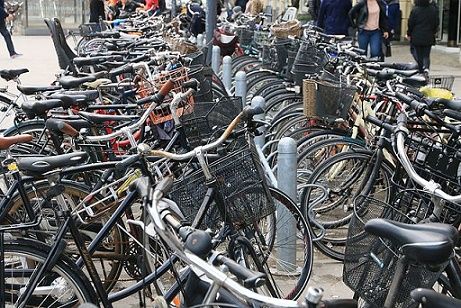The annual review of cycling carried out by Copenhagen Municipality has pinpointed the fact that more people are using their bikes. In 2017 the percentage who cycled to and from work was 43 percent – up 2 percent since 2016.
This is a good investment, as figures from the finance ministry reveal that there is an economic gain of 4.80 kroner every time someone rides 1 km on their bike in Copenhagen. If the ride replaces an equivalent car journey, the gain rises to 10.09 kroner per km.
On your bike!
On the other hand, the increase in numbers makes new investment necessary so that people continue to use their bikes.
“If people drop biking because of congestion or feeling unsafe, it will cause traffic complications for other forms of transport and reduce mobility significantly,” said Ninna Hedeager Olsen, Copenhagen’s deputy mayor for technical and environmental matters.
“We need to support this positive development by establishing more and broader cycle paths and where necessary, this will have to be at the expense of motorists,” added Olsen.
READ ALSO: Copenhagen’s bike bridges a runaway success story
It is also important to create an incentive for people in the neighbouring municipalities to leave the car behind and take the bike when they come into town. Every day, 550,000 vehicles cross the municipal boundaries; that is around 10 times as many cars as bikes.
Drastically reducing car numbers
“Every day we can see that there are too many cars in Copenhagen compared to what the city can handle. Parliament will have to help us here, either by allowing congestion zones or road-pricing,” suggests the deputy mayor.
“In our turn, we will have make the best of the small area we have so that it takes into consideration the most space-efficient forms of transport such as bikes and also make it undesirable to use a car in Copenhagen,” added Olsen.
In 2017 there were 3.9 km of new cycle paths, 600 km of green cycling routes and five new super cycle paths inaugurated in the Capital Region. Additionally, 3,500 new cycle parking stands were established and 12,900 abandoned bikes collected.















